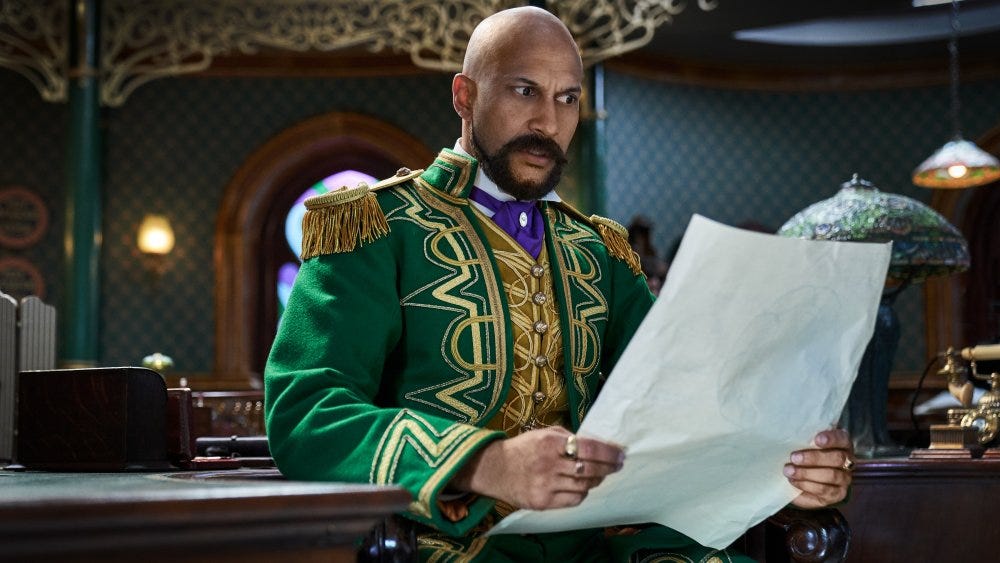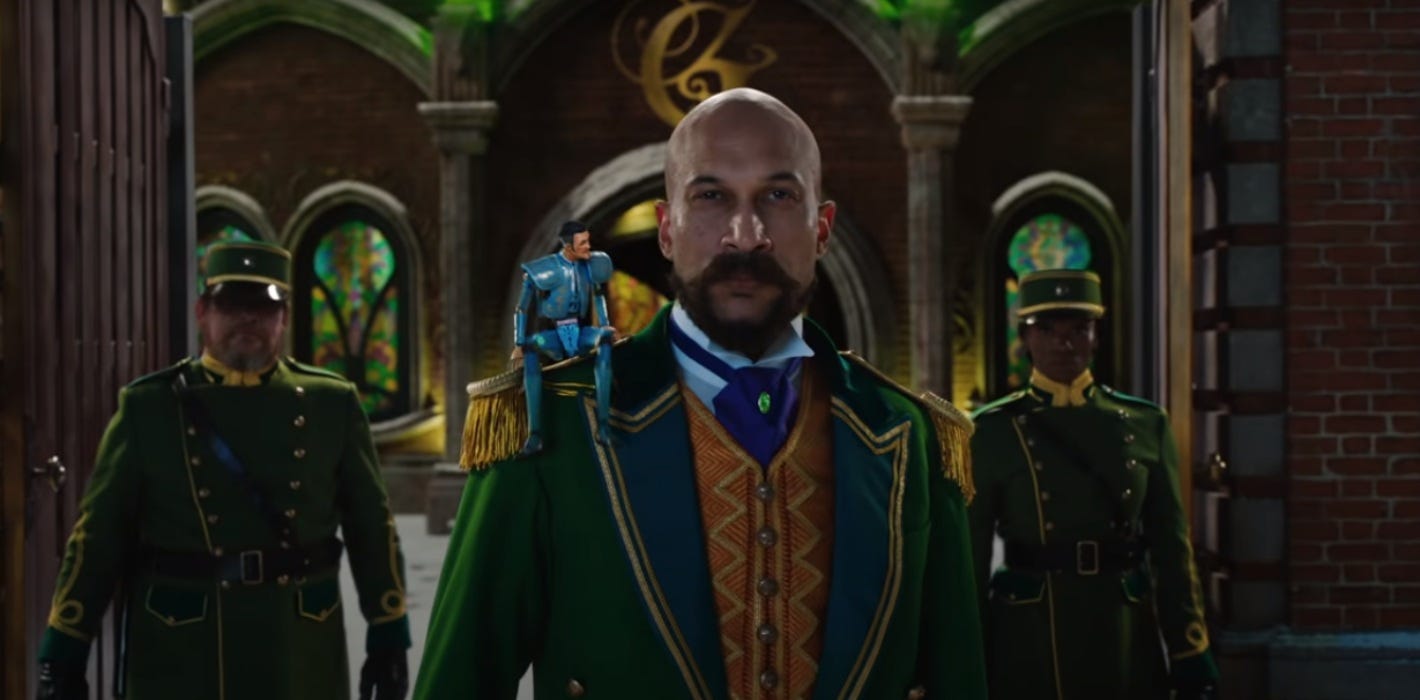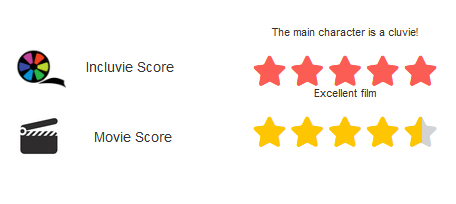I Know This Much Is True: Double the Ruffalo, Double the Brilliance
I imagine that it would be a dream job for an actor to play the parts of twin brothers Dominick and Thomas Birdsey in I Know This Much Is True.
Incluvie Foundation Gala - Learn More
For far too long, most Christmas films, especially from the likes of Hallmark, have been overwhelmingly white. Black Christmas movies are few and far in between to find — so it is wonderful to see more representation on the screen just in time for the holiday season.
The film begins with a grandmother, (Phylicia Rashad) reading a whimsical Christmas story to her grand kids. She tells the tale of the brilliant inventor Jeronicus Jangle (played by Justin Cornwell as a young man, and then Forest Whitaker as an old man). Long ago, Jangle used to be the most esteemed toy-maker in the land — running a little shop named Jangles and Things, where families from all over would come to buy his marvelous toys. Guided by his genius, and his notebook full of inventions, Jangle was at the top of the world.
One day however, that would all come crumbling down. In time, Jangle’s young protege Gustafson, (played by Miles Barrow and then later by Keegan-Michael Key), became envious of him. One of Jangle’s creations, an egotistical sentient matador toy, Don Juan Diego (voiced by star Ricky Martin), convinced Gustafson to steal the notebook away, so they could take away Jangle’s fame and fortune. The plan worked — and surely enough, Jangle began to lose everything. Not only did he lose the notebook full of his creations, but he ended up loosing his creative spark. Soon after, he even lost his wife. Lost and heartbroken, Jangle shut himself off from the world, even losing contact with his dear daughter Jessica (Anika Noni Rose).

Years later, we are reintroduced to Jeronicus Jangle, who is now a gloomy old man. Jangles and Things had gone out of business — and in it’s place was now a failing pawn shop that Jangle was doing his all to keep in business. Meanwhile, Gustafson had become one of the richest toy-makers in the world, all from profiting off from Jangle’s stolen inventions.

Although he was reluctant at first, eventually we see Jangle begin to let warmth into his heart again — thanks to some help from his determined granddaughter Journey (Madalen Mills) and his loyal assistant Edison (Kieron L. Dyer). Working together, the two make a new creation — the Buddy 3000, a little mechanical robot toy. Later on in the film, Gustafson sets out to steal Buddy, and the gang has to work together to stop him. During this journey, Jeronicus begins to find himself again — along with his imaginative spark, and his relation with his daughter Jessica.
Overall, the plot of Jingle Jangle was very well done — it was wholesome, inspiring, and had some excellent messages about the importance of creativity, love, and family. As for everything else that went into this movie, I have plenty of good things to say about it.
First of all, the costume work in this film was absolutely bursting with color and originality! I adored the design-work that went into this film, and it is clear that there was great passion behind it. The general costume aesthetic has a prominent Victorian-steampunk feel to it, owed to costume designer Michael Wilkinson. Each of the movie’s settings are dramatic and interesting as well, with work done on it by production designer Gavin Bocquet.
One of the more interesting things about Jingle Jangle though, is that it was originally intended by director David Talbert to be a musical play — and it really shows. There are musical numbers aplenty, with notable composers such as Davy Nathan, Philip Lawrence, Michael Diskint, and John Legend being on board. Every song on the soundtrack is a total bop; I highly recommend the movie alone just for the music! In addition, all the actors did a spectacular job, and the choreography was very well put together — you can really tell everyone had such a fun time being in this movie. There is even choreography work done by Ashley Wallen, who has previously worked on the Greatest Showman!
I only have a few complaints about this movie. One of them is the length — at a total run-time of 122 minutes, it does tend to drag on at times, especially during dialogue. I feel as though if the screen-time was cut just a little, it would make re-watching the film a lot more enjoyable and less tedious. Jingle Jangle is rather slow at first due to the heavy amount of exposition that occurs in the beginning. It admittedly takes awhile to pick up some steam, as most of the action takes place during the 3rd act of the film. In addition, the villains were a tad lackluster, and could have used a little bit more character development to make them more interesting.

On the other hand, the largest plus about Jingle Jangle is that Diversity is absolutely BIG in this movie. This film does not shy away from having POC as its main leads at all. I thought that Jingle Jangle really was a breath of fresh air after being subjected to years of the same old, predominantly white Christmas movies. It is often incredibly frustrating when watching holiday specials that only focus on rich, white families — when in reality, our world is made up of so many colorful and unique individuals of all different backgrounds. We need to see more of that in film, and Jingle Jangle is a huge step in the right direction.

In conclusion, Jingle Jangle was a truly enjoyable experience — I really do believe that it will set the bar for Black Christmas movies for times to come. Not only does it encourage all kids to be creative and pursue their dreams, but most importantly, it goes to show that you don’t have to be white to have a little magic in your life.

Related lists created by the same author
I imagine that it would be a dream job for an actor to play the parts of twin brothers Dominick and Thomas Birdsey in I Know This Much Is True.